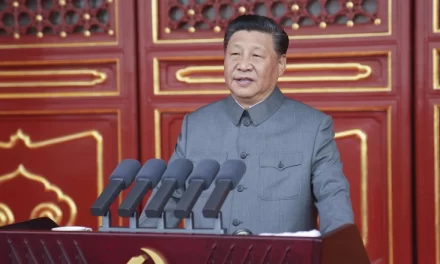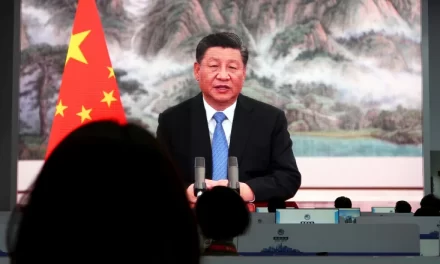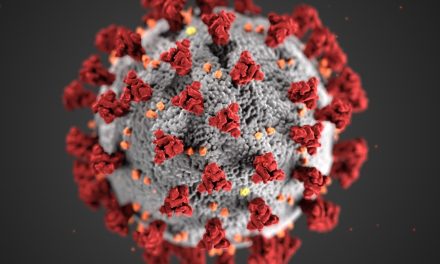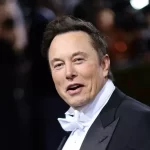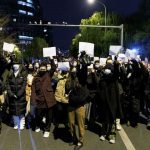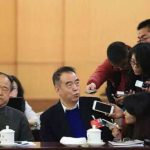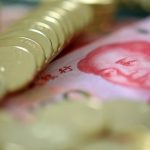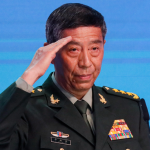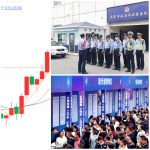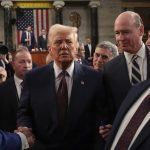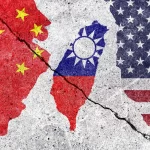Editor’s note: Xiao Gongqin is a historian at Shanghai Normal University. He is known for his advocacy of continued growth-promoting economic reform, even as he is no particular fan of political reform before China becomes sufficiently prosperous, and an advocate of preserving what is distinct about Chinese culture. In this he resembles, and in his writing admires, some Chinese intellectuals in the decades after foreigners and their culture and technology began pouring into China after the Qing Dynasty lost the First Opium War in 1842.
China’s reform has been going on for more than 30 years. Why are ideological trends that had been gradually marginalized as of ten years ago, on both the left and the right, re-emerging now? This phenomenon is related to China’s structural characteristic of “strong state/weak society.” Since social autonomy did not grow correspondingly with reform, opening up, and economic development after the late 1980s, the autonomy of civil- society organizations was regarded as an alien entity that was not conducive to political stability, and was subject to strict control and tightening. The power of civic society is too weak. It lacks the social power to perform the function of social diversification and integration needed to achieve good governance. The disadvantages of this “strong state/weak society” system are becoming more and more obvious. In brief, China in the mid-reform period fell into five problems.
I. The authoritarian patronage network and the problem of authoritarian self-interest
No authoritarian system can avoid the tendency of the political elite to pursue their self-interest, which is a common problem for all human societies. However, with respect to the relationship between the state and society, the structure of post-revolutionary authoritarian politics is of the strong state/weak society type. When the state is strong and society is weak, society’s restraint on officials is correspondingly inherently weak, and in revolutionary political culture, the systems lacks any power-supervision mechanism. When these two factors are both grafted on, there will be conflicts both within and outside the system. The double weakness in the ability to limit power means that there is an intrinsic lack of institutional arrangements to do so within the political system, and there is no ability at all to restrict power outside the system, due to the weak society.
Precisely for this reason, in China’s strong state/weak society structure, official corruption can be even more powerful with the help of the power- patronage network structure. The characteristic of this structure is that there is collusion between corrupt officials and the public security, procuratorial, and judicial systems, between officials and cronies in superior and subordinate functional departments, and between the power they control and the criminal underworld. Between superiors and subordinates in this power structure, the superior acts as a protector and forms a relationship of benefactor/loyal subordinate, with the subordinates as protected persons. Under the control of certain officials, China’s unique judicial and procuratorial system can also participate in the protection system. In this way, it is possible to form an all-round protection network via patronage between the top and bottom, left and right in some political spheres. A four-ring structure of dependence is formed between protectors, loyalists, gang members, and local supervisory and judicial institutions, with local officials at the center. In an environment dominated by this kind of authoritarian patronage network, the benefits of corrupt behavior are greatly increased, and the costs to and risks of illegal crimes are greatly reduced, so corruption will become more and more intense. Taking the recent “Wukan incident” in Guangdong as an example, a village party secretary can serve in his position for up to 40 years. Over the years, the party secretary of Wukan Village used his power to sell off 6,700 acres of land, and the villagers basically did not get a penny. These serious drawbacks are precisely related to the above-mentioned structural drawbacks of cronyism given a strong state and weak society.
II. The problem of the gap between the rich and poor caused by special-interest monopoly
It should be said that if were no state intervention, a laissez-faire, pure market economy, there would still be a trend towards polarization. It would occur because those who have capital, technology, knowledge and power would be better off than those who do not own such scarce resources, the former finding it easier to benefit from market conditions. The differentiation between rich and poor under laissez-faire market conditions is a natural phenomenon in a competitive market economy. A few years ago, the price of a Tomson-group apartment in Lujiazui, Pudong, Shanghai, reached 150,000 yuan per square meter. This price (for one square meter) was equivalent to the average income earned by a farmer in the country over 76 years while living without food. This stark contrast is an example of polarization in a market economy.
And what is more, under the structural conditions of strong state/weak society, the collusion between power and money leads to social injustice, making it more difficult for power to be effectively supervised by independent social forces. Powerful government officials and entrepreneurs who have gained huge benefits under the former’s protection, such as certain real-estate owners and coal bosses, can easily form a mutually beneficial relationship of power-for-money transactions. The strength of the government makes it difficult for society to check and balance the most critical factor in the system, i.e. the profit-sharing alliance between the powerful and wealthy classes. This structural shortcoming is particularly reflected in the consequences of the implementation of the management-buyout policy. In the late 1990s, this policy occurring during the transformation of the state-owned enterprise system. Although it objectively had a positive significance in overcoming the economic dilemma inherent in transition, it also caused a primitive accumulation-style polarization between the rich and the poor. The policy did indeed produce miraculous effects on the economy, and most enterprises after restructuring have gained strength in market competition. The country has also successfully cast off years of heavy burdens. The banks no longer pour the people’s money into hopeless bottomless pits and escaped the trap of constant bad debts, thus effectively avoiding the crisis of a total bank collapse. However, the winners of such management buyouts converted the state-owned enterprises they managed into their own private enterprises by issuing shares that only they could purchase, at extremely low prices. Although the property rights were clarified and the economy generally developed at an accelerated pace, the social injustice and corruption caused by this have become increasingly apparent. China’s current coal bosses have great wealth, lead decadent lives, and are found in large numbers of people, which in combination has attracted the attention of the Chinese people.
To make matters worse, as scholars have pointed out, under the control of state administrative power, land supply prices continued to rise, and powerful people who have accumulated a great deal of wealth used their monopoly advantages to turn to real estate. As a result, to the high income from real-estate speculation was added the icing on the cake for these plutocrats: the price of residential housing also continued to increase accordingly. Low-income people cannot afford to buy houses at all, and the cost of buying them for middle-income people has increased. The profit-sharing caused by the alliance between power and money has seriously affected the healthy development of society. The polarization under the Chinese model is based on the ever-increasing income gap between groups that share in the profits on the one hand and the landless and low-income portion of the general public on the other. The high costs of medical treatment, sanitation, unemployment, and education have caused a strong sense of insecurity among the public.
III. High taxes and the problem of the rich and poor
China’s strong state/weak society system means the government can use its strong mobilization capacity to unleash its tax-raising potential to achieve the goal of strengthening its administrative power, while civil society’s ability to check and balance this is very weak. According to research by Professor Chen Zhiwu, the Chinese government’s inflation-adjusted tax revenue increased by a factor of 10 from 1995 to 2010, while the income of urban residents only increased by 2.2 times, and the income of farmers only by 1.7 times. Another set of data indicates that nationwide capacity increased by 21%, while administrative costs increased by 27%. It is a well-known fact that the huge public expenditure by various governments in China has caused strong dissatisfaction in society. The new office building of the audit bureau in a poor county in Henan, which has only 20 employees, actually has an area of 3,000 square meters, while space in the bureau’s associated family building only allows each family to have a space of 200 square meters. There are countless facts like this.
Economically speaking, the main manifestation of the current serious imbalance in society’s wealth distribution is China’s extremely large administrative expenditures. The proportion of government administrative expenses in national fiscal expenditures is not less than 30%, and some experts even estimate that it may reach 37.6%. This is in sharp contrast to most countries in the world, where this expenditure does not exceed 10%.
According to experts, in recent years the annual consumption of the three official expenses (purchasing and using public cars, traveling abroad at public expense, and entertainment at public expense) has reached hundreds of billions of yuan, and this does not include the total personal compensation of national public officials. The fundamental reason for the huge expenditure is the unusually large number of public officials who feed at the trough of the state’s finances. The proportion of officials to citizens in China has long been much higher than before reform and opening up. And while in 1998 there were only 40 people to support one official, but today it now requires 26. In China’s annual recruitment event for national civil servants, hundreds of people compete for each position, which reflects one of the shortcomings of China’s political system. Power and high taxes make the public sector a direct beneficiary of public spending. To make matters worse, such huge allotments to these public-sector expenses occur without a transparent fiscal budget and lack effective supervision and management of how that budget is used. Some foreign scholars believe that China ranks thirteenth from the bottom in the world in terms of fiscal budget transparency.
According to a report by the Chinese Academy of Sciences, China’s overall tax burden accounted for 34.5% of GDP in 2010. According to World Bank standards, for low-income countries this figure should be about 13%, for upper-middle-income countries about 23%, and high-income countries about 30%. In 2010, China was still a low-income country, but its tax rate has reached that of high-income countries.
The widening gap between the rich and the poor has not only put low- and middle-income people in a difficult situation, but the middle class may also become poor due to soaring housing prices. The entire society is unable to afford to consume under the pressure of high housing prices and rising education fees. The result directly leads to a serious low-consumption problem and difficulties in simulating the economy, and affects the economy’s ability to develop sustainably. A small-business operator provided a typical account book: his purchase and sales price difference is 20%, that is, there is a gross profit of 20 yuan out of every 100 yuan of sales. However, this 20 yuan gross profit is reduced by payment to the government of nearly 4 yuan in value-added tax, surcharges, flood control fees, etc. The landlord must also pay rent, water and electricity bills, and wages. In addition, 24% of the employee’s salary must be paid as social security, and 5% into the housing provident fund. Calculated in this way, the necessary monthly expenses account for 12% of sales revenue. Now there is only 4 yuan left. This 4 yuan is then taxed at the corporate income tax figure of 0.8 yuan, leaving net profit as only 3.2 yuan. Even out of this 3.2 yuan, you also have to pay 0.64 yuan in dividend income tax, leaving only 2.56 yuan. This means that the initial investment of 80 yuan will in the end only yield a return of 2.56 yuan, a return rate of 3.2%, which is less than the interest on a regular deposit at the bank. Faced with the contradiction caused by insufficient consumption, the government does not address the root cause. Instead, it takes advantage of the strong state’s substantial financial resources and uses huge investments to boost the state-owned economy, such as via the high-speed rail project, creating huge new corruption opportunities for monopoly interest groups. Moreover, due to this it is difficult to stimulate investment to actually achieve results. Once the stimulus fails, the only way left will be to print money, and ordinary people will inevitably become further victims of inflation.
IV. The “state-owned sickness” problem
In our strong state/weak society system, those in power have a strong belief that state-owned enterprises are the lifeblood of national and institutional security. Any policy that strengthens and favors the interests of these enterprises, from the perspective of political stability, is considered to be the correct one. The characteristics of state-owned enterprises’ “non-economic thinking” (that is, considering economic decisions from a political perspective) have worsened an already serious problem.
This state-owned sickness has made things worse, and people in society are generally worried about the trend of “the state advancing and the private sector retreating.” According to statistics from Wang Yukai, a professor at the National School of Administration, monopolized industries in 2008 accounted for 8% of national employment, but took away half of the national wages and benefits, resulting in huge industrial injustice. The office buildings of some state-owned pharmaceutical factories are as luxurious as the Palace of Versailles in France, and the chandeliers in the lobbies of state-owned monopoly companies often cost tens of millions of dollars. In 2011, Sinopec’s refining business suffered a loss of 37.4 billion yuan, yet employee income increased by more than 23% during the same period. From this we can see this true additional serious social injustice caused by state-owned monopoly enterprises. The peculiarities in the implementation of employee benefits in different companies distort the directions of people’s efforts, their career choices. China’s increasingly popular civil-service examination, where one candidate is ultimately deemed sufficiently qualified among nearly a hundred or even several hundreds preparing for and taking the exam, is a manifestation of this trend.
This “state-owned sickness” has further exacerbated the polarization in society. On the one hand, powerful government officials and entrepreneurs who have obtained huge benefits under the protection of political power have formed a monopolistic profit-sharing group. The two parties have formed a mutually beneficial relationship of power-money transactions, and they have obtained huge benefits in this arena they have built. And on the other hand, high housing prices make it difficult for the middle class and the general public to accumulate wealth, thus creating polarization under the “China model.”
And some monopolistic state-owned enterprises do not need to stimulate interest in innovation nor in improving efficiency. They can easily obtain huge profits from society through the state-owned operating-monopoly mechanism. China’s New Century weekly recently disclosed a list of CRH2 train-parts suppliers from the catalog, with prices of more than 3,000 pieces of train equipment. Some have prices four or five times higher than the market price. Just one bathroom in a high-speed rail carriage costs 300,000 to 400,000 yuan, a faucet costs 12,800 yuan, a banknote box costs more than 1,000 yuan, and the toilet combination costs nearly 100,000 yuan. The markup is so substantial that people describe the high-speed rail carriages as being paved with gold bricks. People will naturally think of how huge the “rebate” behind such a huge expenditure must be.
Linked to this state-owned sickness are public corruption and huge expenditures of public funds. According to reports, a proposal drafted by the Central Committee of the Jiusan Society listed some data: at present, the country’s annual public expenditure on food and drink [for state employees] has reached 300 billion. Such a huge amount of public funds for food and drink squeezes out expenditures supporting people’s livelihood, such as education, health, medical care, and social security. For example, in 2009, China’s domestic administrative expenditures (including general public services, diplomacy and public-security expenditures) accounted for 18.6% of fiscal expenditures; total overseas foreign administrative expenditures accounted for less than 10% of their total fiscal expenditures.
V.The problem of society’s weakening social-innovation capacity
Since the founding of the People’s Republic of China [Note: as with many Chinese fundamentally sympathetic to CCP rule of China, the word used here means “establish the country,” implying a country worthy of the name did not exist before 1949] the ability of society and culture to grow on their own has been very weak. However, under the authoritarian model of strong state/weak society formed during the reform/openness era, due to the lack of civil society, social functions originally undertaken by society, such as education and culture, have all been squeezed out by the government’s powerful embrace, and state bureaucracy has evinced a natural tendency to be administrative and utilitarian. This makes China’s education, culture and other aspects of social spiritual and cultural construction subject to the constraints of administrative bureaucracy. Moreover, under a strong-state system, the administrative bureaucracy takes political stability as its main goal, which frustrates the development of social autonomy in various ways. Officialdom can only act according to regulations, and the strong control by bureaucratic nannies of culture and education is bound to have a negative impact on the innate cultural creativity of society.
Because of the absence of civil society, people’s culture lacks the power to autonomous organize and is in a state of fragmentation, so self-generating culture has not developed. This situation is not conducive to cultural construction. Our current deteriorating social order, and the crises of family ethics, integrity, and morality are not due to insufficient publicity by the government, but because a system of integrating human spirit and ethics into an autonomous society has not been fully developed.
The degradation of social-innovation capacity under China’s current system is also related to the dominance of the bureaucratic state. In view of the complexity of China’s transformation, what China needs most is that political elites be what Deng Xiaoping called “people who understand,” and must be forward-looking and imaginative. However, in a restricted bureaucracy, the conditions for the emergence of such politicians are extremely difficult to satisfy. Only after experiencing great dangers and under special circumstances, among the older generation of revolutionary veterans with qualifications and experience, could strong talents who could bring order to chaos like Deng Xiaoping emerge. In the early 1980s, a large number of people with the ability to think independently entered officialdom due to the needs of the times. However, as the bureaucracy became routinized and stereotyped, it became increasingly difficult for this system to produce political leaders with far-sightedness and unique insights. Parochial bureaucrats instinctively tend to be conservative, and the characteristic of bureaucracy is already to select officials based on specific criteria. The allure of official promotion and the role of expectations and positioning in official culture causes and shapes the people who enter it according to the same criteria. This makes it impossible for officialdom to produce talents who can cope with the challenges of complex environments. The Qing Dynasty scholar Fa Shishan said: “The private wisdom possessed by a mediocre talent can be used by that official, but the national interest and security lie in operating a greater machinery, and a minister who is not knowledgeable cannot understand its subtleties.” Given the elimination process built into such a system, It is often only possible to let people of little talent and limited knowledge do what comes naturally to them, as smoothly as a fish in the water. But it is difficult to enable broad-minded, knowledgeable ministers to stand out.
In a culture that starved of the oxygen of reform, it can even be said that the bureaucracy has a reverse-elimination mechanism, in which officials will automatically exclude all those with distinctive abilities. Bureaucracy has always been a big dying vat, purging all those capable of thinking and of having innovative ideas, coloring everyone who remains in officialdom the same color. The system often does not need those with vision or talent. The most adaptable people in the bureaucracy are those who only care about the present and not the future; they can only talk in officialese and cannot reveal their true views. They do not seek merit but merely seek to avoid mistakes. They have no ambition and live only by their experiences. They retreat when faced with difficulties, and only seek to not stand out, to not rock the boat.
The author is a professor at Shanghai Normal University.
This piece was translated from Yibao Chinese. If republished, please be sure to add the source and link https://www.yibao.net/?p=247631&preview=true before the text when reposting.
The views of the author do not necessarily represent those of this journal.


